From January 1, 2016, the Law on Organization of the Government of Vietnam (amended) of 2015, which was passed by the National Assembly of the XIII Legislature on June 19, 2015, at the 9th Session, will take legal effect (the New Law). Compared to the Law on Organization of the Government of Vietnam of 2001, the New Law has been supplemented with many provisions to further enhance the quality and efficiency of activities, and to strongly promote the role, responsibility, and authority of the Government of Vietnam in the new situation.
1. Regarding the position and function of the Government of Vietnam
The position and function of the Government of Vietnam are the most crucial issues, decisive for determining the tasks, powers of the Government of Vietnam, and the relationship between the Government of Vietnam and other agencies. With that understanding, besides continuing to stipulate that the Government of Vietnam is the highest administrative agency of the Socialist Republic of Vietnam, the executive body of the National Assembly, the new law also defines the Government of Vietnam as the agency "executing executive power," to conform to the principles and views on state power organization, the division, and coordination among state agencies in exercising legislative, executive, and judicial power as stipulated by the Constitution 2013.
With its function, the Government of Vietnam is the highest administrative body in the entire system of state administrative agencies, which includes constitutional administrative agencies (the Government of Vietnam, People's Committees) and non-constitutional administrative agencies (ministries, ministerial-level agencies, specialized agencies under the People's Committees); at the same time, it is the unified agency managing and directing all economic and social aspects of the country, deciding on national management policies and institutions, from internal affairs to foreign affairs, addressing issues arising in social life, ensuring social order and safety, and protecting citizens' legitimate rights and interests. In terms of organization and administrative management, no agency is higher than the Government of Vietnam. Agencies, organizations, and individuals must respect and strictly comply with the Government of Vietnam's administrative decisions. With its executive function, the Government of Vietnam is accountable to the National Assembly; it must execute and organize the implementation of laws, resolutions, and decisions of the National Assembly, be subject to the supreme supervision of the National Assembly, and report its work to the National Assembly, the Standing Committee of the National Assembly, and the President; and explain to the National Assembly about the execution of its assigned tasks and powers. The relationship between the Government of Vietnam and the National Assembly is a hierarchical relationship where the Government of Vietnam not only complies with the law but must also follow the National Assembly.
The identification of the Government of Vietnam as the agency executing executive power represents innovation and a significant step in the process of international integration and the acceptance of the general values of humanity, essentially determining the Government of Vietnam as a collective institution executing executive power, which means the power of planning and directing national policies and implementing the policies and laws passed by the legislative body. However, the Government of Vietnam is not an independent executive power agency but an executive body of the highest state power agency, which is the National Assembly of the Socialist Republic of Vietnam; the execution of executive power here does not absolutely belong to the Government of Vietnam but may also be assumed by other agencies, such as the National Assembly and the President. This model is also applied in many countries around the world, such as the 2007 Egyptian Constitution, which stipulates that the Government is the highest executive and administrative body; the 1982 Chinese Constitution, which states that the State Council (the Government of Vietnam) is the executive body of the highest state power agency (the National People's Congress).
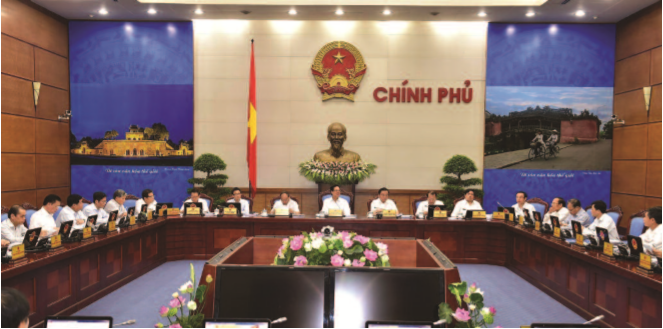
2. Regarding the organizational structure and members of the Government of Vietnam
The new law stipulates the reorganization of the Government's organizational structure to be more streamlined and rational according to the multi-sectoral management model, concentrating state management functions concerning sectors and fields under ministries and ministerial-level agencies. The new law continues to stipulate that the Government of Vietnam consists of the Prime Minister, Deputy Prime Ministers, Ministers, and Heads of Ministerial-level agencies, with the number of Government members decided by the Prime Minister and subject to National Assembly approval. The organizational structure of the Government includes ministries and ministerial-level agencies, with the establishment and dissolution of ministries and ministerial-level agencies also subject to National Assembly approval. The Prime Minister is elected by the National Assembly from among its deputies based on the President's recommendation, possessing separate tasks and powers as the head of the Government and the head of the state administrative system, tasked with leading and taking responsibility for the functioning of the national administrative system from the central to the local level, ensuring the unity and smooth handling of the national administration (Article 4).
To ensure that the National Assembly increases its control over the establishment of the Government and the performance of the Prime Minister, Ministers, and other members of the Government, and to ensure flexibility, the new law continues not to specify the number of Government members or the Government's organizational structure but stipulates in principle that both the number of Government members and the Government's organizational structure are decided by the National Assembly on a term basis (Article 2). However, the submission of the National Assembly's decision to establish and dissolve ministries and ministerial-level agencies is crucial, requiring collective discussion and majority decision-making, so the new law shifts this authority from the Prime Minister to the Government (as per the 2001 Law on the Government Organization).
As for the Government's structure, Deputy Prime Ministers are Government members, a constitutional position established to assist the Prime Minister with tasks assigned by the Prime Minister. Deputy Prime Ministers, however, do not have a separate established mechanism, so when handling work, Deputy Prime Ministers act on behalf of the Prime Minister and are accountable to the Prime Minister for their delegated tasks; at the same time, as members of the Government, Deputy Prime Ministers share collective responsibility for the Government's activities.
Regarding ministries and ministerial-level agencies, the new law essentially inherits the provisions of the 2001 Law on the Organization of the Government. Ministries and ministerial-level agencies are Government agencies performing state management functions over one or several sectors and fields and related public services. However, unlike the 2001 Law on the Government Organization, the new law removes the provision related to representing state capital ownership in state-owned enterprises by ministries and ministerial-level agencies and adds functions to organize and inspect the implementation of laws relating to sectors and fields nationwide (Article 39). Additionally, it stipulates that the Government Office is not only the working apparatus of the Government but also that of the Prime Minister (Article 41).
Regarding the legal status of Ministers and Heads of ministerial-level agencies, the new law specifies more clearly both as Government members and as leaders of ministries and ministerial-level agencies in the relationship with other ministries, ministerial agencies, Government agencies, and local authorities. It emphasizes the role and responsibility of Ministers and Heads of ministerial-level agencies concerning state management of sectors nationwide.
3. Regarding the tasks and powers of the Government of Vietnam, the Prime Minister, Ministers, and Heads of ministerial-level agencies
The new law's stipulation of the Government of Vietnam's tasks and powers shows greater initiative and creativity, and it more clearly and systematically articulates the Government's administrative activities and policy-making, national strategy formulation, and execution responsibilities. The new law specifies more clearly the Government's tasks and powers across various fields such as the implementation of the Constitution and laws; economy; foreign affairs and international integration; organization; organization of the state apparatus, public service policies, officials, and public employees, and emulation and commendation work; inspection, control, public reception, and complaint and denunciation resolution; anti-bureaucracy, corruption, and waste prevention. These tasks and powers are grouped into two categories (the highest state administrative functions; executive and execution functions). Thus, the Government's tasks and powers ensure both specificity and generality, stability, and long-term nature.
With the highest administrative body function, the Government of Vietnam has the task and power to manage all aspects of economic and social life, from economy, resources, environment, and climate change response, science, technology, education, and training, culture, information, sports, and tourism, health, and people's healthcare, social policies, ethnic affairs, religious affairs, national defense, national security, and social order and safety to protecting the legitimate rights and interests of the state, society, human rights, and citizens' rights. Implementing the 2013 Constitution to concretize the principle of power control between legislative and executive, limit administrative unit separation impacting the state's administrative system's management and operation efficiency, and regarding the sentiments, customs, and practices of the community, the new law eliminates the Government's authority to decide on the establishment, dissolution, merging, division, and adjustment of administrative boundaries below the provincial level (the 2013 Constitution assigns this authority to the Standing Committee of the National Assembly).
With its executive function, the Government is responsible for promptly and fully issuing legal documents to implement the Constitution, laws, resolutions of the National Assembly, ordinances, resolutions of the Standing Committee of the National Assembly, commands, and decisions of the President, and to carry out assigned tasks (Article 6, Clause 1); and for being accountable to the National Assembly for performing its tasks and exercising its powers, achieving management and operational effectiveness and efficiency of the state administrative system, and for the policies and directions it proposes to the National Assembly; and reporting to the National Assembly, the Standing Committee of the National Assembly, and the President twice a year, or upon request (Article 27). The provisions of Article 6, Clause 1, of the new law represent significant progress, reflecting a clear understanding of the Government's executive role and responsibilities under the condition of building a rule of law state, considering the law the most critical tool in organizing and managing the state administrative system’s operations.
With the function of exercising executive power, the Government of Vietnam is tasked and empowered to: plan and direct national policies; formulate and propose laws to the National Assembly; issue plans, specific policies, and sub-law documents to implement policies, laws, and directions; guide, direct, supervise the implementation of plans, policies, directions.
Regarding the tasks and powers of the Prime Minister, the new law supplements and specifies them in more detail to clarify the Prime Minister's role both as the head of the Government and the highest administrative head, becoming an effective institution to address specific arising issues in the Government's activities, enabling more initiative in leading the Government to promptly formulate mechanisms, policies, and propose institutional construction. The Prime Minister decides and is accountable for all the Government and administrative system activities per authority to ensure the unity and smooth functioning of the national administration.
As the leader of the state administrative system from central to local levels, the Prime Minister is a powerful institution within the state administrative system: appointing, dismissing, or relieving the head and deputy head of Government agencies; assigning ministerial-level heads before National Assembly approval and Presidential appointment; temporarily assigning provincial People's Committee Chairpersons in the absence of an elected Chairperson; requesting provincial Chairpersons to suspend or dismiss subordinate Chairpersons for failing at assigned tasks or for legal violations; deciding criteria, and conditions for establishing or dissolving specialized provincial-level agencies, or any other organization under People's Committee control; submitting the appointment or relief of ambassadors abroad to the National Assembly Standing Committee for approval (Article 28).
However, alongside added powers, the Prime Minister also bears the responsibility of reporting the Government's work and own performance to the National Assembly, the Standing Committee of the National Assembly, the President, and the public via the media on vital issues within the Government and Prime Minister's authority (Article 29, Clauses 2 and 3).
As Government members, Ministers, and Heads of ministerial-level agencies are tasked and empowered to: participate in resolving the Government's collective work; collectively decide and take collective responsibility for the Government's matters; propose necessary policies, mechanisms, and legal documents to the Government and Prime Minister; attend Government meetings; execute specific work tasks as assigned or authorized by the Government and Prime Minister; and collectively share responsibility for the Government's activities. They are also required to report to the public on important issues under their responsibility (Article 33).
As leaders of ministries and ministerial-level agencies, Ministers, and Heads of ministerial-level agencies are tasked and empowered to: lead, direct, and take individual responsibility for all ministry or agency work; direct affiliated units to implement approved strategies, plans, programs, and projects, and the tasks assigned by the Government; decide on issues under their ministry or agency's functions and tasks per authority; manage state affairs in assigned sectors; organize and follow-up on the law's implementation nationwide in their sectors; report to the Prime Minister, Government, and National Assembly; handle staffing, rewards, and discipline, and manage agency assets; issue legal documents as authorized (Article 34). The delegation of decision-making and accountability to Ministers and Heads of ministerial-level agencies is to meet practical management requirements, reduce work overload for the Government and Prime Minister, and resolve overlapping responsibilities among agencies and levels per the principle “each task is led by one agency and one level accountable to the end.”
Moreover, as compared to the 2001 Law on Government Organization, the new law more clearly delineates the tasks and powers between the Government, the Prime Minister, and Ministers and Heads of ministerial-level agencies; specifying the relationships, especially the leadership, direction, and management of the Government and Prime Minister over local authorities; and strengthening administrative discipline and compliance with lower-level agencies adhering to higher-level agencies' leadership and decisions; transferring leadership and administrative management tasks from the Government to the Prime Minister (Articles 6 to 26). These new points aim to build a proactive, creative, and development-driven Government, focusing on policy formulation, creating high-quality development policies with strategic vision, aligning with development trends, truly serving the people and society with pioneering roles in promoting development.
Source: noichinh.vn
- Key word:
- government of Vietnam
 Article table of contents
Article table of contents
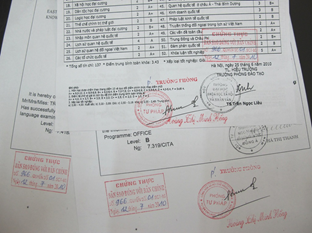
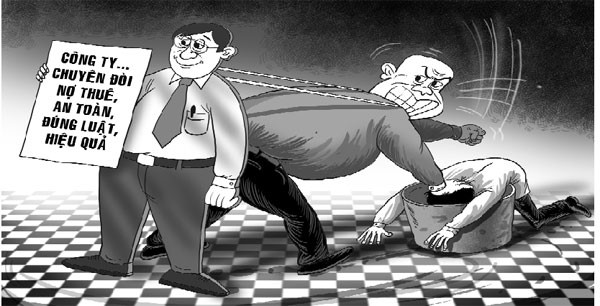
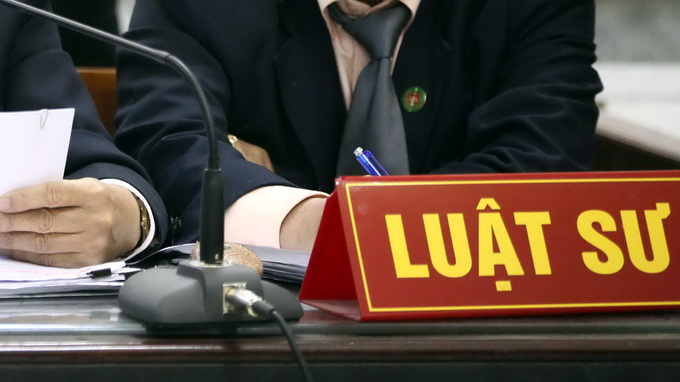
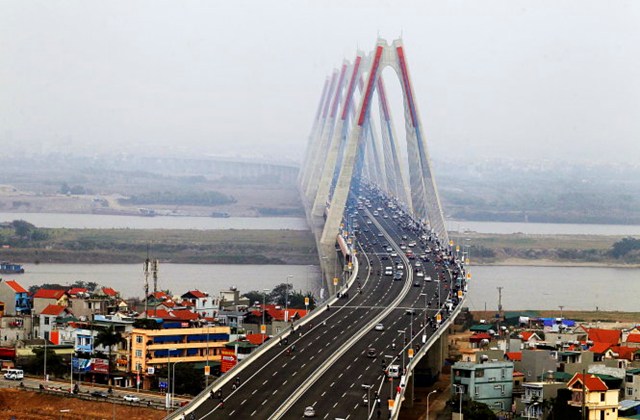


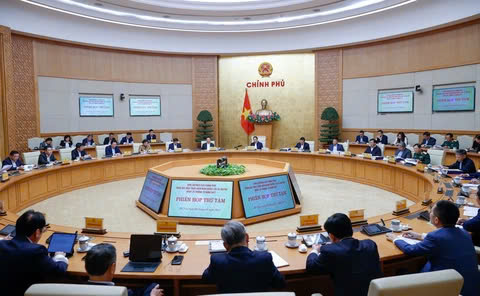
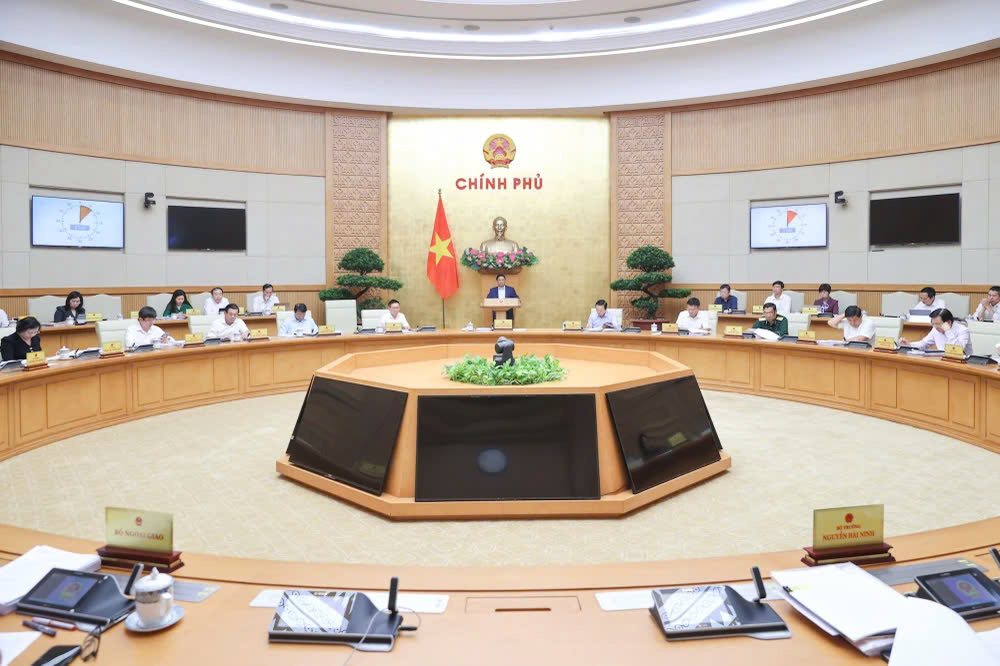
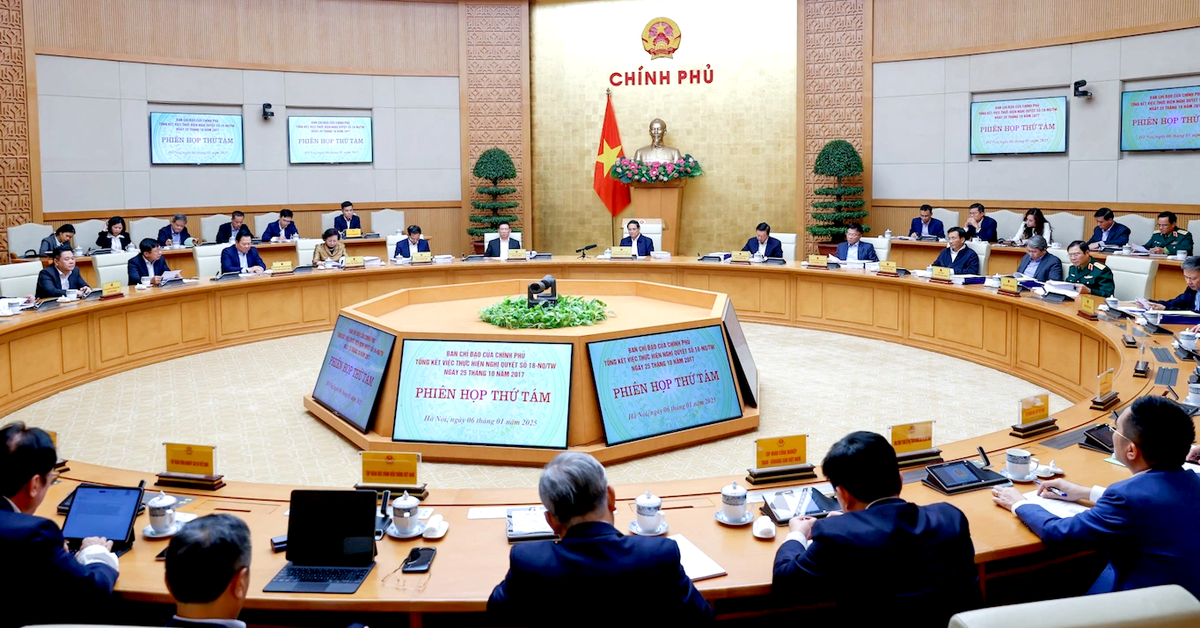

.Medium.png)
.Medium.png)
.Medium.png)
.Medium.png)
